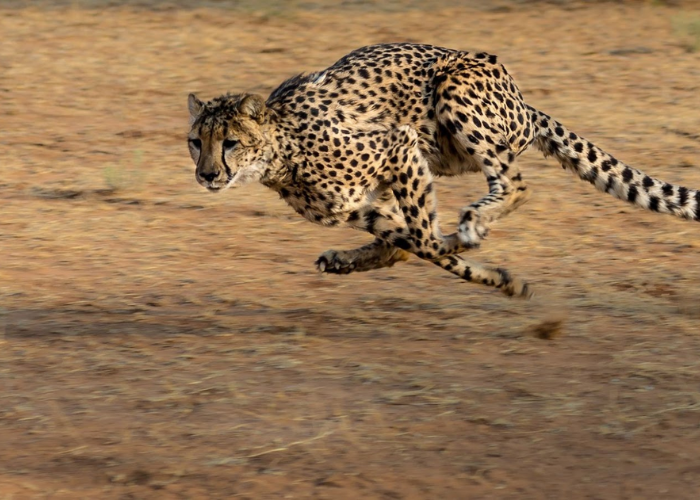Cheetahs are one of the world’s most magnificent animals, yet their future is becoming increasingly fragile. As one of the oldest known large cats, cheetahs have been around for over two million years, but their numbers are rapidly declining. The cheetah faces an uncertain future as their habitats shrink due to human development and poaching.
Overview of Cheetahs
Cheetahs are magnificent animals known for their incredible speed and agility. They are the world’s fastest land mammals, and their athletic abilities have even been compared to professional athletes.
Unfortunately, they are also one of the most endangered species in the world, with experts listing several concerns for their survival. Cheetahs inhabit regions of Africa and Asia and are threatened by habitat loss, poaching, and the illegal pet trade. With the population of cheetahs estimated to be around only 7,500, experts have been calling for increased conservation efforts to ensure their survival. In addition to habitat loss, cheetahs also face threats from human-wildlife conflicts.
As their habitats shrink, cheetahs are increasingly forced into conflict with humans and have been killed in retaliation for attacking livestock. This has devastated the cheetah population, and further action must be taken to protect these majestic animals.
Magnificence of Cheetahs
The magnificence of cheetahs is something to behold. They are the fastest land animal, reaching up to 75 miles per hour (120 km/h), and can accelerate from 0 to 60 mph in only three seconds. With such speed and agility, they can easily hunt down their prey, and their sleek, spotted coats only add to the beauty of the animal.
But sadly, these magnificent creatures are in danger of becoming extinct. With only around 7,100 cheetahs left in the wild, conservationists and experts are now expressing their concerns for the species’ future. They face several threats, such as habitat loss, conflict with humans, and illegal hunting, which risk the species’ survival. To help protect the species, these experts are working to educate people on the importance of cheetahs and their conservation and ensuring that the animals have the habitat and resources they need to survive. With the help of conservationists, hopefully, cheetahs can remain on this planet for generations to come.
The fragility of Cheetahs
The fragility of Cheetahs is a major concern for experts, as the big cats face many threats that have put them on the brink of extinction. Cheetahs are the fastest land animals, capable of reaching speeds of up to 75 mph, but their speed has not been enough to save them from the many dangers they face. Habitat loss, poaching, and conflict with humans are all factors that have put cheetahs at risk, and their numbers have been dwindling for years. With their low numbers, experts fear that the cheetah may soon be extinct if something isn’t done to protect them.
Cheetahs are a unique species, and their fragility is partly due to their highly specialised diet and lifestyle. They rely heavily on the savannahs of Africa and the Middle East for their food and shelter; when those habitats are destroyed, the cheetahs are left nowhere to go. Additionally, cheetahs have a low reproductive rate, meaning it takes a long time for their population to recover once depleted. This is why conservationists are so concerned for the cheetah’s future; they may soon disappear from the wild if something isn’t done to protect them.
Concerns Listed by Experts For Cheetah Conservation
Experts in cheetah conservation have listed several concerns that need to be addressed to help ensure the long-term survival of these magnificent but fragile creatures. The most pressing concerns include habitat loss, human-wildlife conflict, poaching, illegal trafficking, and a lack of prey availability. As cheetah populations continue to decline, these issues must be addressed to ensure the species does not become extinct shortly.
Habitat loss is one of the primary factors driving the decline in cheetah numbers. These animals require vast open grasslands and savannas to survive, but much of these areas have been transformed into agricultural and urban land. This has led to decreased available habitat for cheetahs, making it much harder for them to find suitable areas to live in. Human-wildlife conflict is also a major factor in cheetah conservation.
As human populations increase, conflicts between humans and wild animals become more frequent. This can lead to the destruction of cheetah habitat or even direct killings of cheetahs due to perceived threats to human safety. Poaching and illegal trafficking of cheetahs are also major concerns. Cheetahs are highly sought after for their beautiful fur and are often illegally trafficked for use in the fur trade. This has led to a dramatic decrease in the number of cheetahs in the wild and a decrease in genetic diversity.
Finally, a lack of prey availability is a major factor in cheetah conservation, as these animals require a steady supply of prey to survive. As prey populations decrease due to human activities, cheetahs become increasingly vulnerable to starvation and other threats. It is, therefore, vital that action is taken to ensure that prey populations remain healthy.
In conclusion, several concerns must be addressed to ensure the survival of cheetahs. Habitat loss, human-wildlife conflict, poaching, illegal trafficking, and a lack of prey availability are all major issues that need to be addressed to ensure the long-term survival of these magnificent but fragile creatures.
Possible Solutions to Help Conserve Cheetahs
Possible solutions to help conserve cheetahs are being developed and implemented worldwide by groups such as the Cheetah Conservation Fund (CCF) and the International Union for Conservation of Nature (IUCN). These organisations are working to protect cheetahs from habitat destruction, illegal poaching, and other threats, such as climate change. One of the key strategies used by these organisations is to create protected areas, such as national parks and wildlife sanctuaries, to provide safe havens for cheetahs.
Additionally, they are advocating for stronger legal protection of cheetah habitats and greater enforcement of existing laws. CCF and IUCN also work with local communities to promote sustainable land use practices that minimise the impact of human activities on cheetah habitats.
Other strategies include creating captive breeding programs to increase cheetah populations and public education campaigns to raise awareness about the importance of cheetah conservation. Through these efforts, experts hope to ensure that future generations can continue to experience the beauty and majesty of the cheetah.
Conclusion
The cheetah is a magnificent animal that is, unfortunately, facing several threats to its continued survival. Conservation efforts are needed to help ensure that this iconic species can thrive in the wild and that future generations can appreciate its beauty and power. Experts list several concerns for the cheetah, including habitat loss, human-wildlife conflict, and poaching. In addition, climate change, disease, and illegal trade in their body parts all play a role in the decline of cheetah populations. The cheetah is a species worth fighting for, and with the right attention and resources, it stands a chance of being preserved for generations to come.



